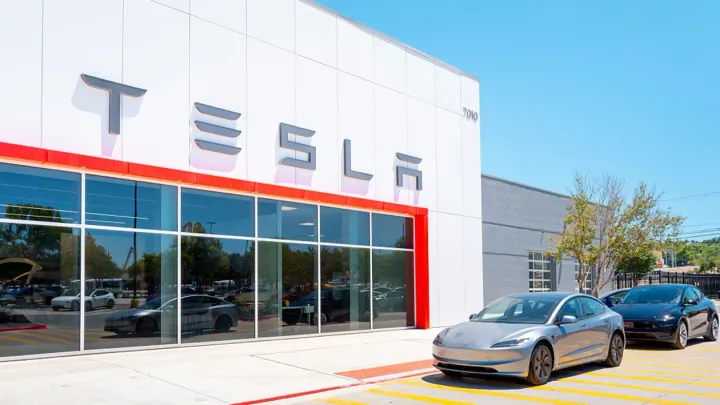Amazon’s Cloud Business Grows 18% in Q2 Amid Intensifying AI Competition

Amazon Web Services (AWS), the cloud computing division of Amazon, reported a solid 18% year-over-year revenue growth in the second quarter of 2025, reaching $30.87 billion. This performance slightly surpassed analysts' expectations of $30.8 billion and underscores the growing reliance on cloud infrastructure in the era of artificial intelligence (AI) expansion.
While the strong growth, however, has been caused by stiff competition like never before from Microsoft Azure and Google Cloud, who both recorded higher growth percentages in the same quarter. Microsoft noted its cloud revenue had grown 39%, with Google Cloud coming in 32% higher, citing a competition race within the industry to keep up with increased global AI demand.
AWS Still the Market Leader
Amazon CEO Andy Jassy highlighted that AWS is still the largest cloud provider by a meaningful amount. "We have a meaningfully larger business in the AWS segment than others," Jassy said during an earnings call. "I think the second player is about 65% of the size of AWS."
AWS now represents 18% of Amazon's overall revenue. The business also delivered $10.2 billion of operating income during the quarter, solidifying its position as Amazon's primary profit driver—though it fell just short of the $10.9 billion estimate from analysts. Amazon's total operating income was $19.2 billion.
Enterprise Wins and Global Expansion
In the quarter, AWS closed a major multi-year agreement with PepsiCo under which it will move some of the company's workloads to the Amazon cloud. The alliance reflects AWS's sustained momentum among large companies looking to transform and expand operations with cloud-based technology.
Also, AWS shared its intention to launch a new data center region in Chile in 2027. The expansion is part of Amazon's larger investment in international infrastructure development to meet escalating customer demand in Latin America and internationally.
Security and AI Infrastructure under the Limelight
Jassy spoke to the escalating concern for data security, particularly in the wake of recent activity among cloud rivals. He pointed to the recent example of Chinese hackers breaching Microsoft's SharePoint Server due to a flaw, as he highlighted AWS's unblemished record for protecting sensitive information.
“For most companies, they’re putting data that they really care about in the cloud,” Jassy said. “The security and the privacy of that data matters a lot, and there are very different results in security in AWS than you’ll see in other players.”
Yet, as with other cloud providers, AWS too is constrained in supply chains on power and infrastructure to address ramping AI workloads. Microsoft, for example, expects capacity issues related to AI to continue through the fourth quarter of 2025.
FAQ: AWS Q2 2025 Performance and Outlook
What was the revenue of AWS in Q2 2025?
AWS saw $30.87 billion in revenue in Q2 2025, representing an 18% year-over-year increase.
How does AWS performance measure against its peers?
Though AWS dominates the cloud business in absolute terms, Microsoft Azure and Google Cloud posted higher growth rates at 39% and 32% respectively, signaling stiffer competition.
How important is AWS to Amazon's overall business?
AWS is Amazon's biggest profit contributor, accounting for 18% of the company's total revenue and generating $10.2 billion in operating income in Q2 2025.
What new deals or expansions did AWS announce this quarter?
AWS landed a multi-year cloud migration contract with PepsiCo and released plans to create a new data center region in Chile by 2027.
Are there any challenges AWS is currently facing?
Yes. AWS is grappling with supply constraints, especially at the level of power and infrastructure required for AI workloads. Security, of course, continues to be a top priority as the cloud sector increasingly faces cyberattacks.
As AI adoption increases and the world's largest businesses seek to scale more effectively, AWS's established foundation and continuing investments set it up for growth even under increasing pressure from competitors.



